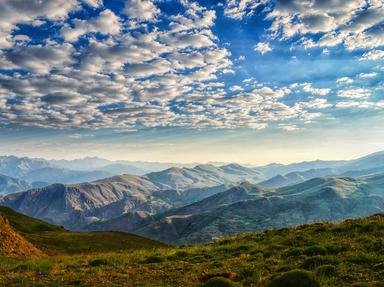Quiz Answer Key and Fun Facts
1. Almost everybody knows that Edmund Hillary was the first person to reach the summit of Mt. Everest on the 1953 British expedition, but who were the first Brits to stand on top?
2. Climbing at high altitudes is not exactly the safest hobby one can partake of. K2 is called the "Savage Mountain" and Nanga Parbat is the "Killer Mountain". Which of these mountains offers the least favorable odds for would-be summiteers?
3. Which of the following is NOT true about Tyrolean climbing legend Reinhold Messner?
4. In spite of the best efforts of Dr. Charles Houston and Fritz Weissner on K2 in the 1930s, Americans' first ascent wasn't until 1958 on an 8000 meter peak. What peak was it?
5. In 1950, a French expedition climbed Annapurna, the first 8000 meter peak to be climbed. Tragically, the descent turned into a nightmare evacuation and the two summiteers, Louis Lachenal and Maurice Herzog, suffered severe amputations due to frostbite. What led to the frostbite?
6. Mt Everest's neighbor to the south, Lhotse (8516m or 27,940ft) is the fourth highest mountain in the world. Its south face is one of the most difficult faces in the Himalaya. What was the controversy on this face in 1990?
7. Mt. Everest is 8850m, or 29,035ft high, and has been summited by over 3000 people. Only one, however, had climbed every single one of those 29,035 feet by the end of the 20th century. Who was he?
8. All 8000 meter peaks lie in the 'death zone', an altitude above 23,000ft where life becomes near impossible. The hardy Sherpa people of Nepal are much better suited to the thin air, having lived their lives in the high valleys of Nepal. In 1999, who established a record for time spent on top of Mt. Everest, as high in the 'death zone' as you can get?
9. A lot of climbers have gotten close to the tops of these mighty peaks, probably none more heartbreakingly so than Fritz Weissner, who almost climbed K2 in 1939. Fritz was about 20 feet of rock scrambling and an easy 600 foot snow slope away from the summit, and the weather was beautiful. Why didn't Fritz summit?
10. Speaking of almost getting to the top, on May 25, 1955, Joe Brown and George Band of a British expedition 'almost' made it to the summit oh Kanchenjunga, the third highest mountain on earth at 8,586m, 28,169ft. They were given credit for the first ascent anyway; why?
Source: Author
mountainguru
This quiz was reviewed by FunTrivia editor
Pagiedamon before going online.
Any errors found in FunTrivia content are routinely corrected through our feedback system.

